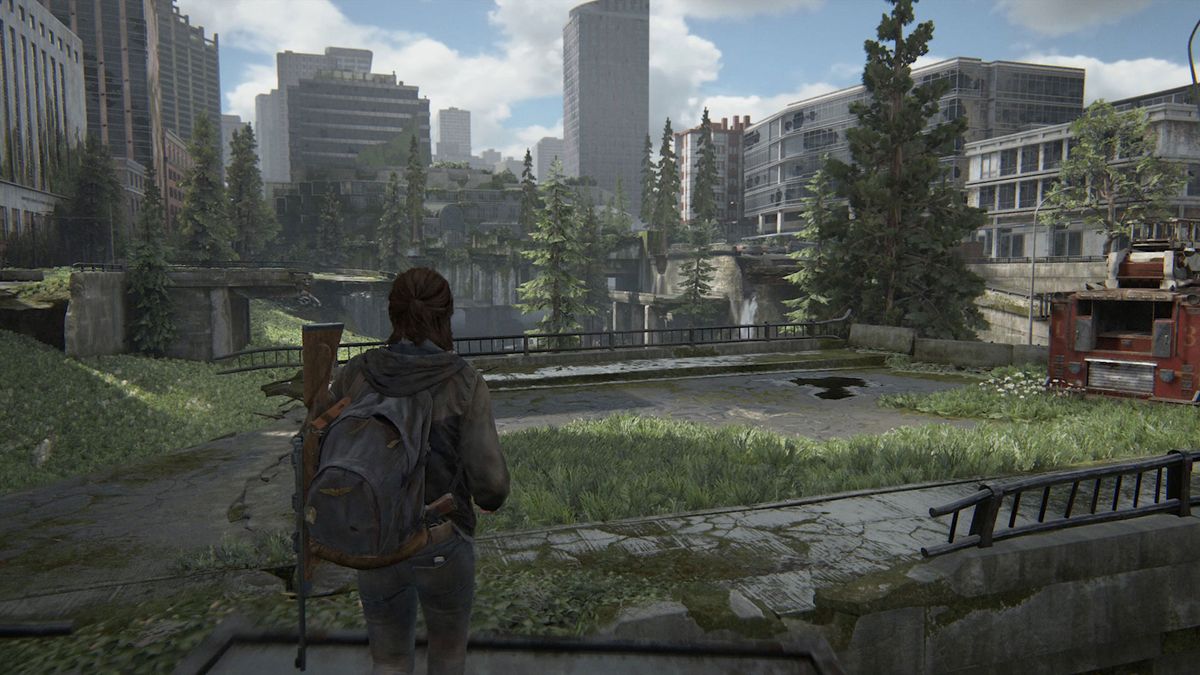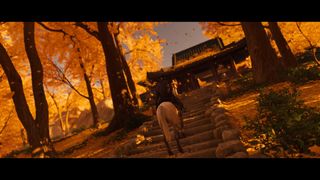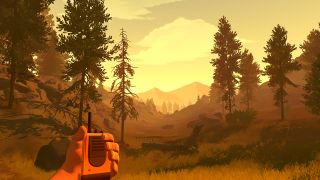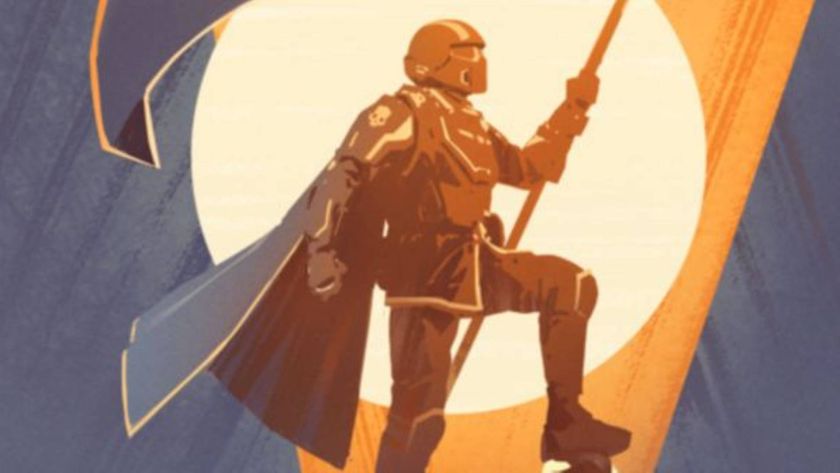More games should give us the option to walk through worlds, instead of forcing us to sprint through them
Many developers give us a dedicated button to sprint, but isn't it time they let us slow and and walk instead?

Humans, even meta-humans, don't often converse while sprinting from one place to another. When exploring new places, we don't reach down and pump up our Air Max shoes for a quick lap around the perimeter. We take our time, drink in the details and admire the view. Our brains notice little things, which spark synapses and craft memories. Movement creates a sense of place; rooting us to a spot in time and space. In games, everything seems to move quickly. Designers are, whether subtly or brazenly, constantly pushing us forwards, through checkpoints, battles and exposition. However, with all this speed we miss things. Even the most meticulous gamer can gloss over a detail as they control a character who is in constant locomotion. What we need, in many cases, is not a button to sprint, but a button to walk.
I know what you're going to say; "just tilt the thumbstick gently". But not all of us are able to do that, certainly not for a length of time. In terms of accessibility, wouldn't it be easier to rebind the run button into a walk button within the options? Some games would be able to deliver richer worlds and ground your character in the moment were we able to walk. I first thought this while playing A Plague Tale: Innocence, controlling Amicia who moved everywhere by jogging. Through peasant villages, graveyards, churches and vineyards. Areas which digital artists spent weeks – if not months that steadily turned to years – designing and creating. Of course, this title was only vaguely based in 'the real world', but I found myself questioning, "would this character move this way?" This is her first time in the world on her own, the first time she would see some of these places. Would she not move with trepidation?
Time to soak in the scenery

Once noticed, this became a trend and I couldn't explore games without noticing how ridiculous my current protagonist looked while running around the edges of a room to look for secrets or collectibles. Aside from Ellie and Abby in The Last of Us 2, it seems so many recent modern games push emphasis on haste. Naughty Dog seemed to understand that post-apocalyptic Seattle should be explored slowly. Danger lurked around every corner – you could be ambushed everywhere, even when upgrading your gear.
Of course, many players are happy to speed through areas. Perhaps it never frustrates them as they spin Jin Sakai in swift circles while looking for supplies in dilapidated huts in Ghost of Tsushima, and perhaps they don't mind jogging through cluttered hallways where every item is stuck in a perpetual freeze frame. When I moved to a game where I was forced to move slowly and investigate details around me – The Room VR: A Dark Matter, for example – everything felt more natural. I felt more invested in the environments, able to see the work that went into prop design and lighting choices.
It's the players who take the slower route that find the small Easter Eggs left by developers; or the story nods to a lineage of franchise. When so much work goes into creating these worlds, it feels wrong to speed through and get to the next checkpoint or autosave. When a writer has sat in a room penning dialogue to build a story or sense of character, why do we not walk slowly through conversation with the NPC at our side? Games seem to be ever striving for realism and dense worlds of detail yet forget how humans move and react beyond exposition.

"Some titles have addressed this issue by allowing players to hold a button which forces our hero to keep pace with whoever is talking to them"
Some titles have addressed this issue by allowing players to hold a button which forces our hero to keep pace with whoever is talking to them. Red Dead Redemption and Yakuza both show that this is a possibility. It not only eases frustrations of NPCs lagging behind as we move on, but it places us, the player, within the scene. Games are often a form of role playing, even in the most action packed titles. We are taking on the role of a character in a wider world – we're so often given dialogue response options, but not always a way to move the character through emotional moments.
No other form of media struggles with this situation. You don't see Dwayne 'The Rock' Johnson struggle to deliver exposition while running full pelt through an apartment building corridor. We don't pick up books and read about a pair of protagonists laying out their plan while jogging through their camp. So why can't games take things slowly?
Sign up to the 12DOVE Newsletter
Weekly digests, tales from the communities you love, and more
A world worth exploring

Sometimes this issue spans more than just comfort or role playing for the player. It can be an accessibility issue too. The most recent Sucker Punch title, Ghost of Tsushima, gives players the option of a Japanese voice track for authenticity, yet so often Jin is riding his horse alongside an NPC navigating narrow tracks through bamboo while the player is reading the subtitles. Add onto this the time sensitive dialogue options and I soon became frustrated that I had to juggle three things at once, in a world where mindfulness and consideration is so often encouraged.
And at least console players do have the thumbsticks to tilt, but PC players who use keyboards for movement have no ready solution. Unless developers invest in an option to toggle walking or arrange a keybind, then those players are stuck zooming around like they're being chased by a wasp.
Humans are nuanced creatures. We each react in different ways. With each new generation of consoles and graphics cards, developers fight to achieve realism, building large and lavish worlds with character models that feel like literal works of art. As we stand on the precipice of the next big power push – worlds becoming more seamless, lighting effects highlighting minute facial movements – will we still be stuck with protagonists who must dash from one place to the next as if desperately trying to find a toilet?

It's not as if gamers are averse to taking their time. Over the past few years an entire genre has spawned from games with slow exploration. Walking simulators are becoming just as popular as action games with outlandish set-pieces. There is a place for taking time; Everybody's Gone to the Rapture, Firewatch, Dear Esther and so many more have all shown slow doesn't mean boring.
As we move from this generation to the next, I can only hope that developers let us, as players, have the option of moving characters more naturally through these artificial worlds. This doesn't mean removing sprinting – I don't want to be leisurely walking through a hail of bullets and bombastic explosions – but I want to pause and reflect during heartfelt conversations; to stop at a scenic view without skidding to a stop on the edge. I want to walk gently past corpses, move with care through a lived in house and keep pace with the plot delivering NPC. Just let us walk.
Dan has been playing games for over thirty years, from back when controllers had one button. Thankfully he has managed to keep up with his favourite hobby at his age. You can normally find him playing Roguelikes or Battle Royales, both of which are his specialist subject. When he isn't playing games, he's writing about them in books and articles. If he had to pick a favourite game, it would be The Binding of Isaac or Final Fantasy IX.

Ex Nintendo PR managers say the Switch 2 generation is likely to see the retirement of "several of the major developers at Nintendo who we have known for 40 something years"

Helldivers 2 CEO says industry layoffs have seen "very little accountability" from executives who "let go of one third of the company because you made stupid decisions"











